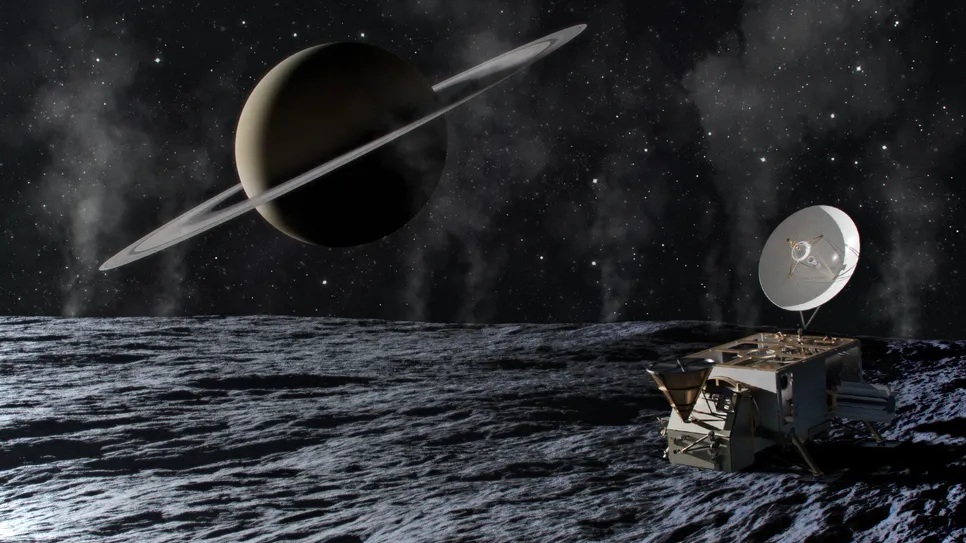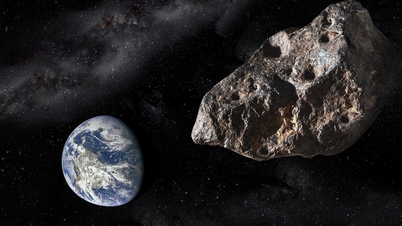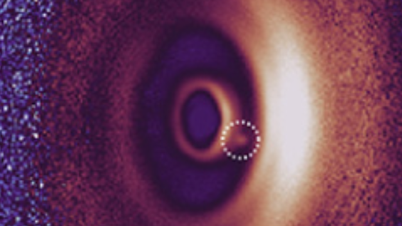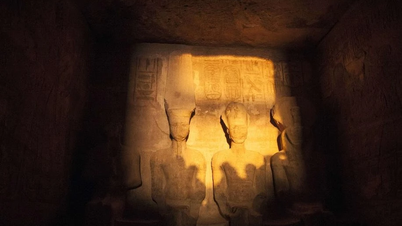(NLDO) - A mysterious "ghost" appeared, spread and then disappeared after a few years in the potential world of life Enceladus.
Research led by planetary geologist Cynthia B. Phillips from NASA's Jet Propulsion Laboratory (JPL) shows that there has been a mysterious change in images taken of an area on Saturn's "living moon" Enceladus between 2009 and recently.
Using data from the Voyager and Cassini spacecraft, Dr. Phillips pointed out a clear dark spot-like structure that appeared in November 2009 data in an area on the surface of Enceladus.
However, by 2012, the black spot had faded to the point of being barely recognizable, and now it has completely disappeared in clearer images.

The surface of Saturn's "living moon" and NASA's future mission Enceladus Orbilander - Graphic image: JOHN HOPKINS UNIVERSITY
According to Space.com , Dr. Phillips and his colleagues at NASA still cannot explain what the black spot is; why it appears and disappears.
However, such a marked change suggests that something is moving on this “living moon” that NASA has placed so much hope in. The research team has put forward a number of arguments and hypotheses.
They don't think it's aliens.
Although NASA scientists believe Enceladus has life, they believe it is much more primitive than on Earth and is mostly aquatic, residing in a subsurface ocean beneath the ice shell.
First, the analysis ruled out the possibility that the 2009 observation was a mistake, as well as confirming that it was not the shadow of something.
They also looked at ultraviolet and color images, revealing that the dark spot is actually reddish-brown, unlike the dark blue areas elsewhere on the moon.
Dr. Philipps said the most likely possibility was an impact crater.
"It might be dark because some dark matter fell onto the surface. You might see some remnants of the impact, which would explain why it has that strange color. Or you might see that the impact exposed a different colored bedrock," Dr. Philipps explained.
The next scenario is even more intriguing: This reddish-brown color is from something emerging from below, possibly reflecting the hidden composition of Enceladus. However, this scenario is considered unlikely.
Additionally, the dark spot’s appearance and disappearance could also reflect geological activity on Enceladus, a phenomenon scientists expect to see. On Earth, geological activity plays a large part in maintaining an environment necessary for life.
The researchers also suggest that the dark spot appears to be fading because sediments from icy Enceladus plumes may have covered it.
“We know the entire surface is covered with plume deposits, which are like little layers of ice that accumulate over time,” explains Dr. Phillips.
The discovery of the strange black spot also presents a particularly good opportunity to study this mechanism, whatever its nature.
The story of the dark spot and Enceladus will be long. With a strong belief in the possibility of an ocean of life, NASA has plans to explore the planet more thoroughly.
Source: https://nld.com.vn/dieu-ky-la-vua-xay-ra-o-noi-nasa-tin-co-su-song-ngoai-trai-dat-196241217105814052.htm



![[Photo] Keep your warehouse safe in all situations](https://vphoto.vietnam.vn/thumb/1200x675/vietnam/resource/IMAGE/2025/10/1/3eb4eceafe68497989865e7faa4e4d0e)

![[Photo] President of the Cuban National Assembly visits President Ho Chi Minh's Mausoleum](https://vphoto.vietnam.vn/thumb/1200x675/vietnam/resource/IMAGE/2025/10/1/39f1142310fc4dae9e3de4fcc9ac2ed0)












![[Video] Hanoi continues to lead the country in innovation](https://vphoto.vietnam.vn/thumb/402x226/vietnam/resource/IMAGE/2025/10/2/6651caeab9a04120a7eb185da97226c8)















![[Photo] Hanoi morning of October 1: Prolonged flooding, people wade to work](https://vphoto.vietnam.vn/thumb/1200x675/vietnam/resource/IMAGE/2025/10/1/189be28938e3493fa26b2938efa2059e)






























































Comment (0)